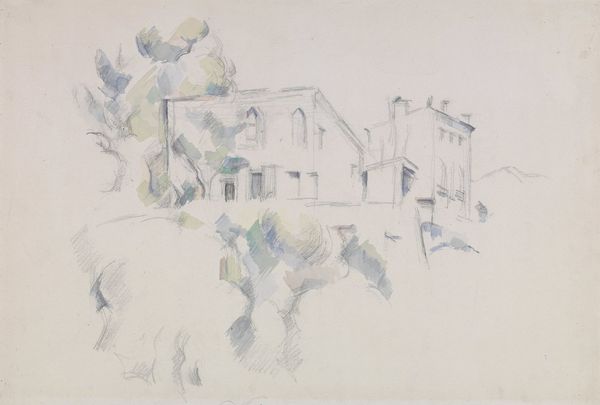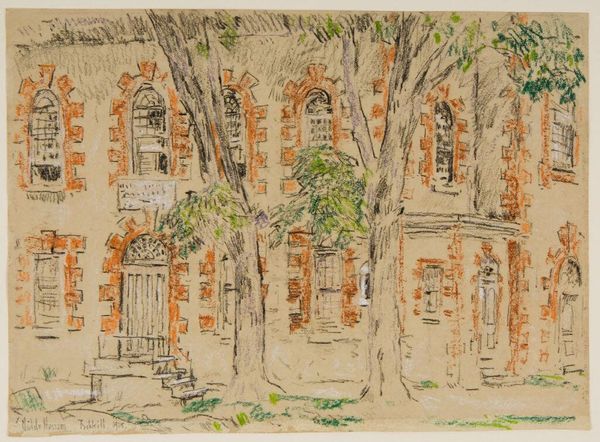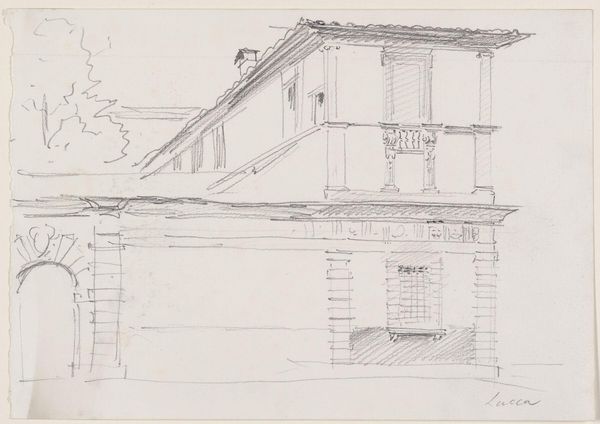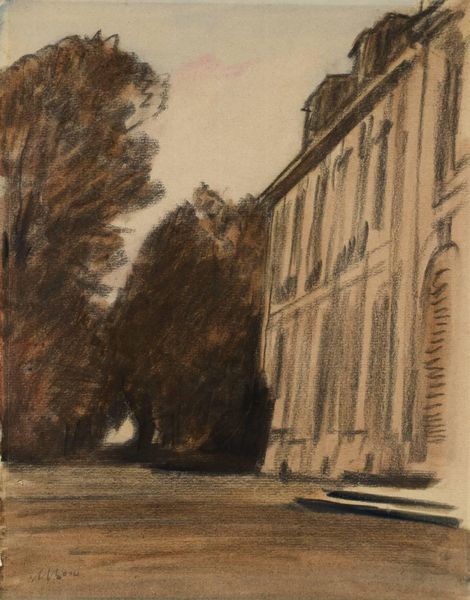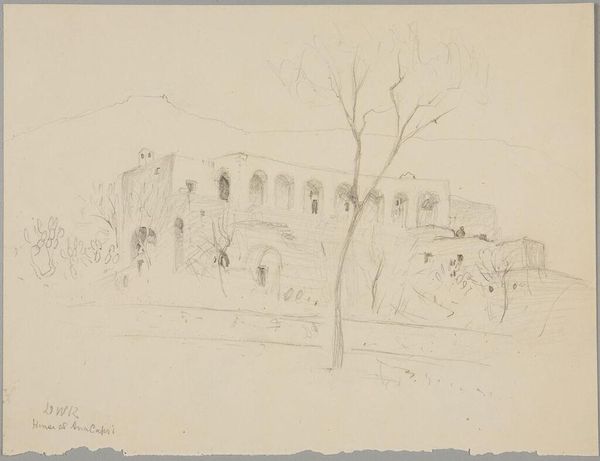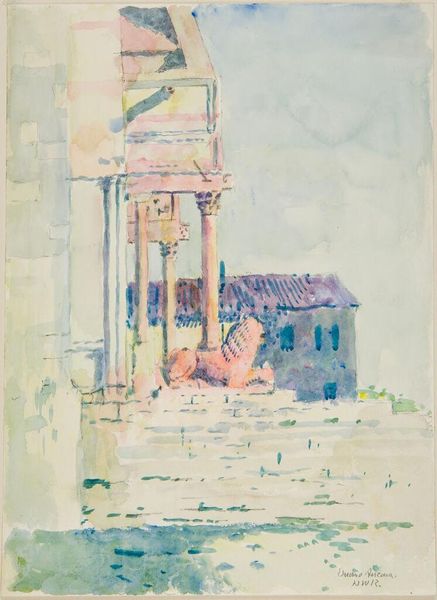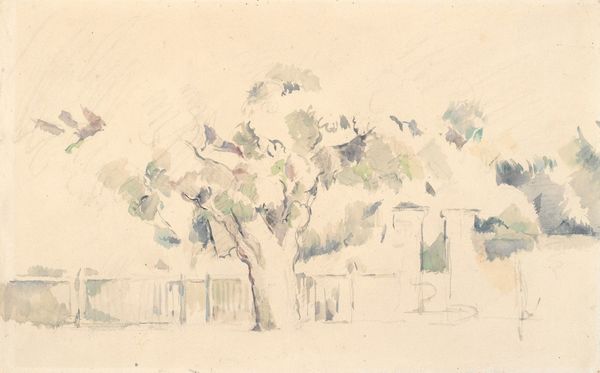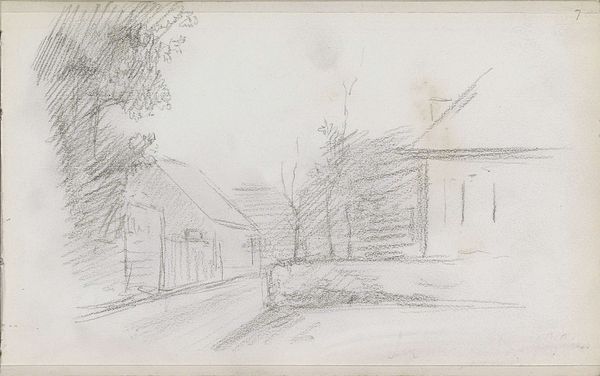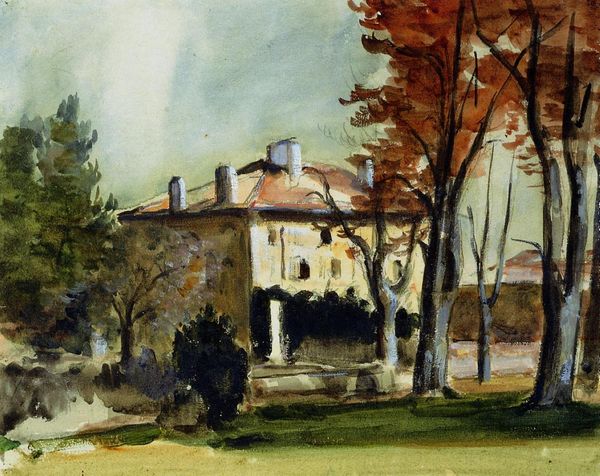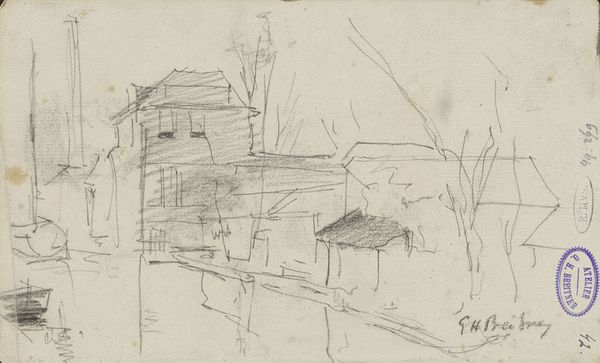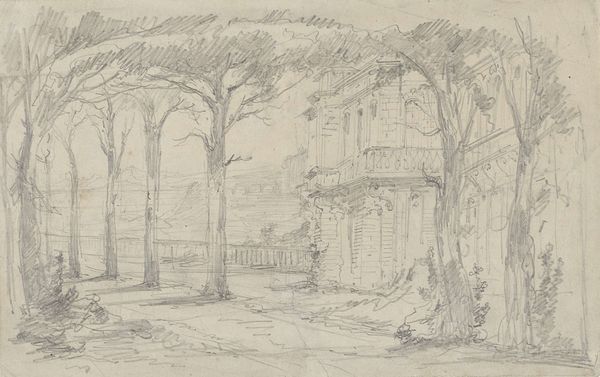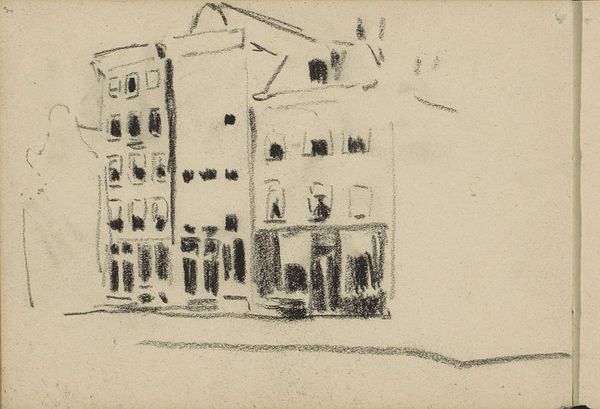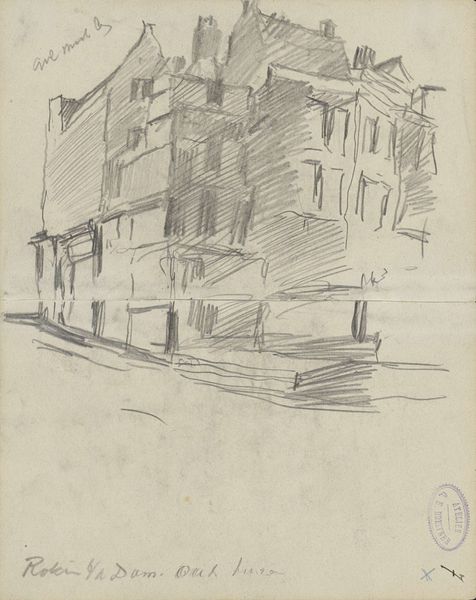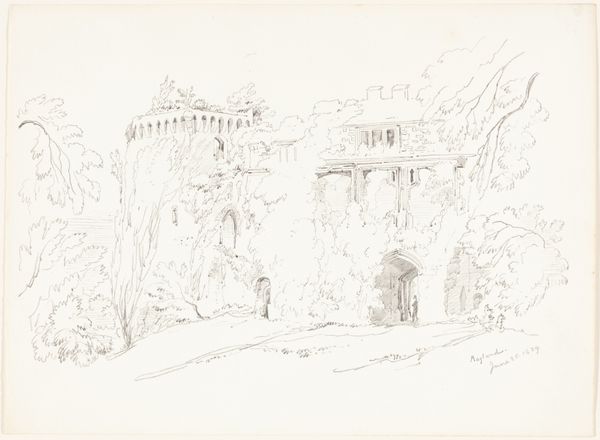
Copyright: Public domain
Curator: I find the way light washes over everything quite arresting. It's almost as if the scene itself is breathing. Editor: Indeed. This is Paul Cézanne's "House in Provence," made around 1895. It's a watercolor, currently held in a private collection. The sheer materiality is what grabs me – look at how the watercolor bleeds and merges, allowing the building to emerge ethereally. Curator: Right, that lightness of being is quite striking. How interesting to consider the role of watercolor during this period, specifically within the landscapes. Given what it symbolizes, one can't help but view it as the delicate, and potentially fragile nature of existence, as well as a more domestic vision, in light of its increased use by women artists at the time. Editor: Yes, it moves between the provisional and something substantial. Considering the socio-economic factors of production involved in watercolor manufacture – its affordability relative to oil paint – suggests a shift in how artistic value was constructed around materiality and process at the time. Curator: Absolutely. Considering Cézanne's own relationship to societal norms, his status as an outsider figure also adds layers. His unique approach to art challenges traditional ideas of representation, blurring the boundaries of gendered expectations during that period. Editor: And yet, thinking of labor again, this image almost obscures its means of creation. While “plein air” suggests freedom and immediacy, the visible structure, brushstrokes and even bare patches of paper tell their own story about art as a material practice. Curator: Yes, but the very act of creating outdoors brings notions of freedom that must also be acknowledged when evaluating the image's meaning. By creating the artwork outside the rigid boundaries of the atelier, there's the freedom to reject old narratives that marginalized members of society, therefore leading to more egalitarian approaches to viewing art and existence. Editor: I suppose. To me the magic is in the materiality, showing us a place rooted in both labor and perception. Curator: And perhaps, seeing the history, the cultural baggage, helps make it feel alive. Editor: Alive, yes! A beautiful observation on our collaborative seeing!
Comments
No comments
Be the first to comment and join the conversation on the ultimate creative platform.
